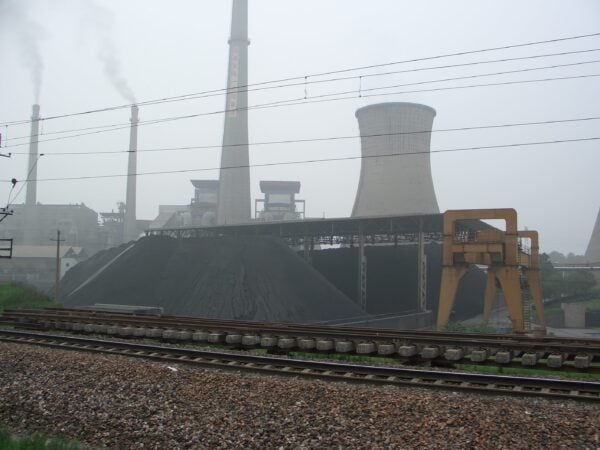We support our Publishers and Content Creators. You can view this story on their website by CLICKING HERE.

China is being hailed as “the world leader” in renewable energy and a model for other countries. However, it’s also the largest consumer of coal, the second-largest consumer of oil, and operates more than half of the world’s coal-fired power plants. Despite advances in renewable energy, China’s emissions have continued to rise steadily.
Environmental media, the World Economic Forum, and China state media claim that China has already achieved its 2030 wind and solar goals and is leading the world in fighting climate change. These assertions highlight underlying weaknesses in climate change reporting.
China’s 2030 goal is to build the capacity for renewable energy to account for about 25% of its primary energy consumption by 2030. Indeed, China now boasts “the world’s largest capacity of renewables and hydroelectricity, as well as the second-largest for nuclear.”
However, the term “capacity” is not synonymous with actual power generation. Installed capacity refers to the maximum potential output that can be produced by renewable, hydroelectric, and nuclear power plants if they were operating at full capacity all the time.
In reality, these plants do not operate at full capacity consistently, and renewable energy has not yet been fully integration into existing power grids.
Integrating renewable energy into the existing grid poses challenges due to the variability of power generation and storage issues. Variability in wind and solar power generation, along with insufficient grid infrastructure, can lead to curtailment, where some renewable energy output is wasted because it cannot be absorbed by the grid.
The development of supporting infrastructure, such as energy storage systems and smart grids, is still catching up with the pace of renewable energy capacity additions. And as experience from attempts at renewable energy in the US and Europe have demonstrated, this integration may be unfeasible.
China’s commitment to expanding wind and solar capacity is a crucial part of its climate goals. However, the country has not explicitly linked these targets to specific emissions reduction commitments.
While increasing wind and solar capacity significantly contributes to reducing reliance on fossil fuels, the direct impact on emissions is less clear. Despite the growth in renewable energy, China continues to expand its coal capacity, which offsets the emissions reductions expected from renewables.
The ongoing reliance on coal and fossil fuels means that overall emissions might not decrease as much as the increase in renewable capacity might suggest.
In fact, China is building additional coal plants, which adds to its overall greenhouse gas emissions and will delay the peaking of CO2 emissions and lead to higher peak emission levels. While renewables are growing, coal still accounts for about 70% of China’s electricity generation.
The greens would argue that China has managed to produce 30% of its electricity with renewables, showing a movement in the right direction. However, most of the current renewable generation is hydroelectric, which has existed for decades.
Solar and wind represent a smaller fraction of overall production. Because they are starting from such a small base, small increases can be touted as tremendous increases in percentage.
Wind and solar accounted for 11% of China’s electricity generation in 2021 and 16% in 2023, representing a 45% increase, but still small compared to coal.
During the same period, China’s coal consumption increased from 87.54 exajoules to 91.94 exajoules, a 5% increase. This translates to an additional 149.6 million tons of coal and approximately 427.3 million metric tons of CO2 emissions.
The Chinese government prioritizes energy security, and coal is seen as a reliable energy source. This focus has led to an increase in coal consumption to meet rising energy demands, particularly during periods of economic growth and energy shortages.
China’s rapid industrialization and economic development drive increased energy consumption. Industrial activities, particularly in heavy industries like steel and cement, contribute significantly to emissions. Large-scale infrastructure projects and urbanization efforts also demand high energy inputs, often met by coal and other fossil fuels.
In conclusion, China is not leading a green revolution. They are not generating most of their electricity with renewables. They are leading in the construction of renewable capacity but not in the generation of energy.
An official Chinese Communist Party (CCP) document on China’s green energy goals states, “China will … accelerate the construction of a clean, low-carbon and efficient energy sector while ensuring energy security, and encourage simple, moderate, green and low-carbon ways of life.”
True to their word, the party has promised to build, but not necessarily use, new energy infrastructure. The emphasis on encouraging citizens to adopt “low-carbon ways of life” suggests that the CCP is not confident they will ever be able to replace coal with renewable energy while maintaining the current standard of living.
Keep in mind that China is an authoritarian, communist country that can make massive projects happen at the snap of Xi Jinping’s fingers. Yet, the CCP believes they cannot replace coal.
Additionally, when the CCP suggests that renewables cannot maintain the current standard of living, remember that the average Chinese citizen only earns $13,000 per year. Their standard of living is already much lower than in the US, and even that level will have to be reduced. In a green world, You will own nothing and be happy.

 Conservative
Conservative  Search
Search Trending
Trending Current News
Current News 


